
Review: Chord Hugo TT2 DAC — high resolution extravaganza
Powerful and compact digital-to-analog converter with impressive sound quality
19.11.2024 08:00 | ~3 minutes read
The updated Chord Hugo TT2 digital-to-analog converter inherits the features of its predecessors but has received a noticeably more powerful decoding system (five times more than the original Hugo and twice as powerful as Hugo 2). Enclosed in a stylish compact case by John Franks made of milled aluminum, the device turned out to be very impressive on our test bench - throughout the review stage, we did not cease to be amazed by the capabilities of this little one.
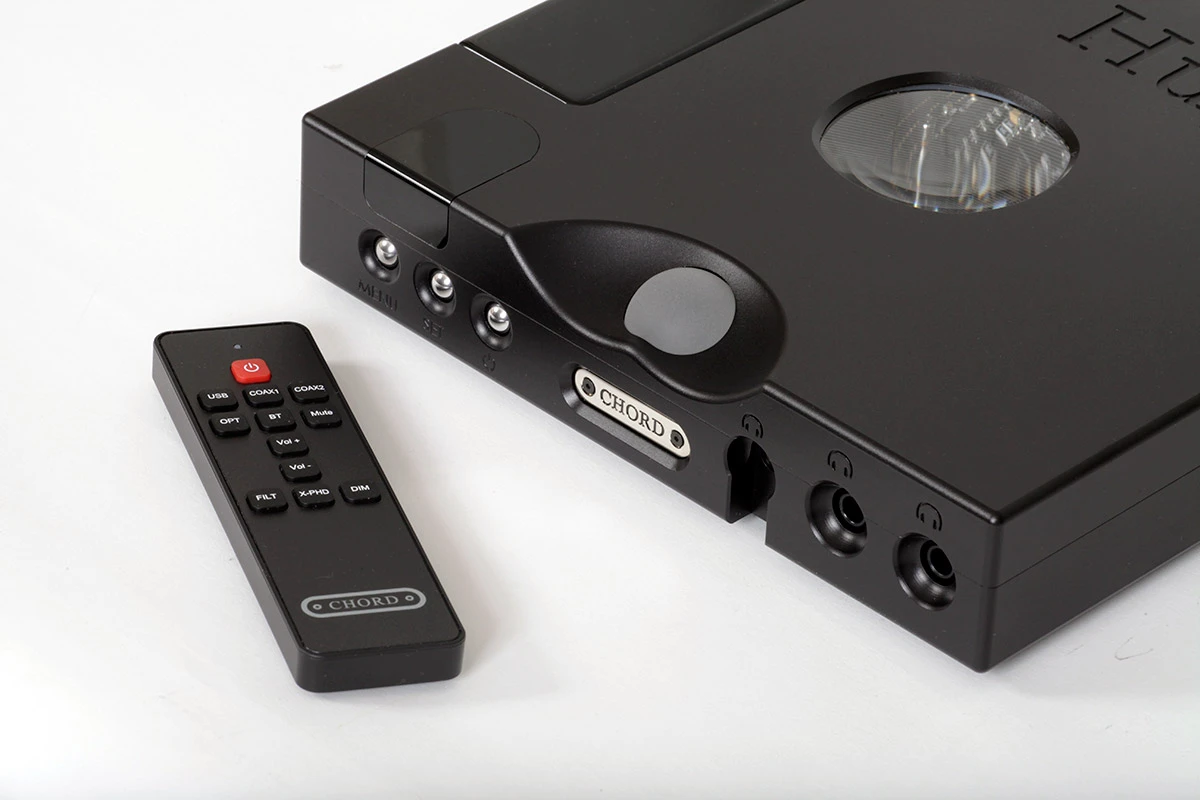
Design
The engine of the Chord Hugo TT2 is a Xilinx Artix 7 Field Programmable Gate Array (FPGA) custom coded by Rob Watts – it consists of 86 cores, each running in parallel at 208 MHz, and the overall system design is now based on ten elements. As result, the time reconstruction filter, 16FS WTA 1, operates with 16x oversampling and an accuracy of 98,304 weighting coefficients (taps). Disclaimer - Hugo 2 operated with 49,152 taps.

Technology
The Chord Hugo TT2 uses a brand-new discrete output stage with second-order noise-shaping integrated between the DAC output and filter, which together with a powerful FPGA provides impressive technical characteristics - distortion does not exceed 0.00008%, channel separation reaches 138 dB and a dynamic range is 127 dB. The system is upgradeable using an external proprietary scaler Hugo M Scaler (filtering with a one million weighting taps).
The model is equipped with High End level preamplifier and headphone amplifier sections – the output power reaches 288 mW at 300 Ohm or 7.1 V at 8 Ohm with unbalanced connection and reaches 1.15 V at 300 Ohm and 18 V at 8 Ohm with a balanced connection (output impedance - 0.042 Ohm). The DAC is powered by an external Li-Po battery power supply at 5A, 9.3V RMS using six super capacitors.
Chord Hugo TT2 offers a full set of interfaces: USB Type-B, a pair of coaxial BNC-based connectors, a pair of optical interfaces and a Bluetooth AptX module. The outputs here include XLR, RCA, a pair of 6.5 mm jacks for connecting headphones and one 3.5 mm minijack, as well as two DX BNC (they are reserved for the future). The device can receive PCM signals with parameters up to 32 bit / 768 kHz, DSD - up to DoP 512 or pure DSD512 (only in the Windows environment).
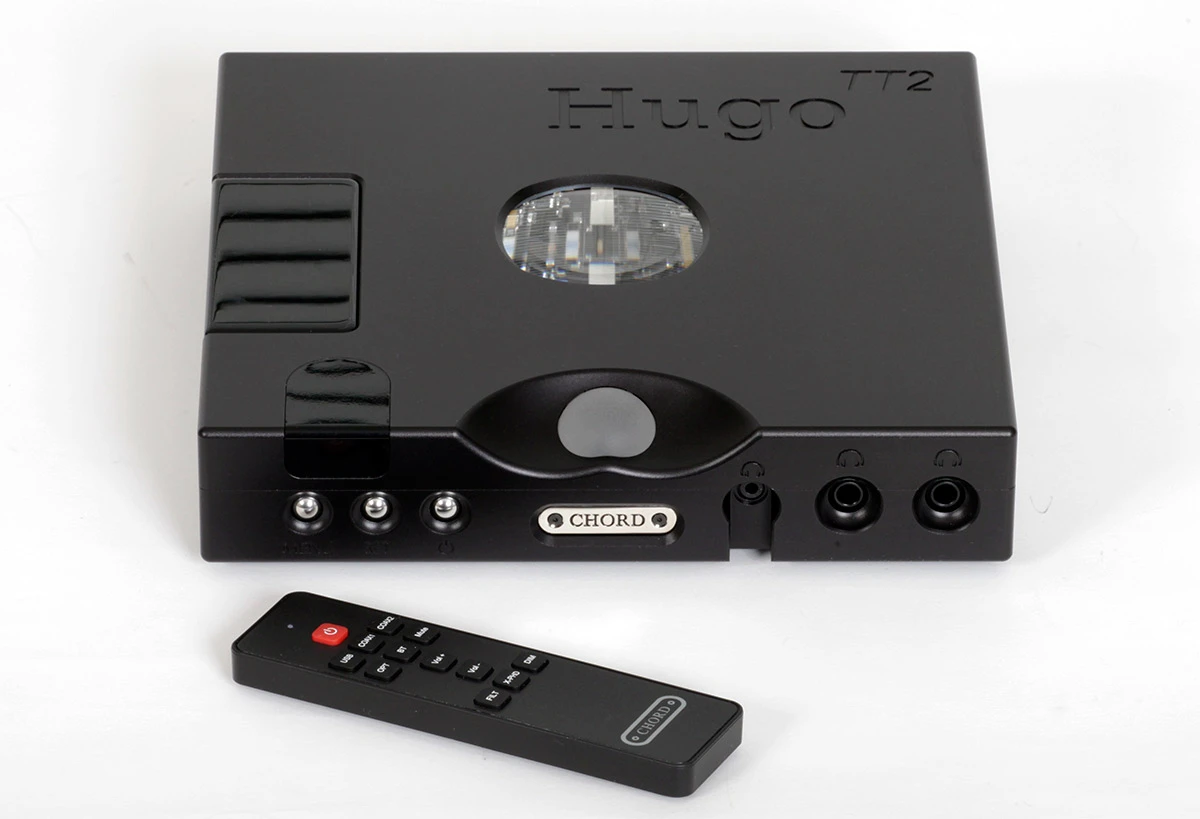
Test system
The device is very sensitive to warming up and full conclusions about its sound quality should be made no earlier than after 100 hours of operation. During testing, a system with a Roon ROCK server, a CH Precision L1 preamplifier, a Gryphon Mephisto power amplifier and Wilson Audio Sasha DAW acoustic systems was used).
Listening

The Chord Hugo TT2 delivers a silky and very agile sound on such complex material as Maria Joao Pires's Chopin - The Nocturnes on Deutsche Grammophon - we were particularly impressed by the analog nature of the reproduction and the timbral precision that the device provided. This allowed us to fully immerse ourselves in the musical canvas, with no inclinations to the microdynamics, again.

Switching to Infected Mushroom - Vicious Delicious demonstrated excellent rhythmic characteristics. Although in terms of the length of low-frequency notes and bass resolution, the device did not offer a flurry of detail, as devices with a five times higher price tag do, the Chord Hugo TT2 was able to draw all the musical plans of the most complex compositions without a hint of "mush".

Finally, Dvorak: Symphony No. 9 - From the New World performed by the Chord Hugo TT2 provided us with a mercury delivery with amazing plasticity and an absolutely non-fatiguing sound character. The textural richness of the sound was amazing.
Conclusion
In its price range and even with a "step up", the Chord Hugo TT2 guarantees to satisfy almost all audiophile desires - our applause for a truly high-tech digital-to-analog converter.
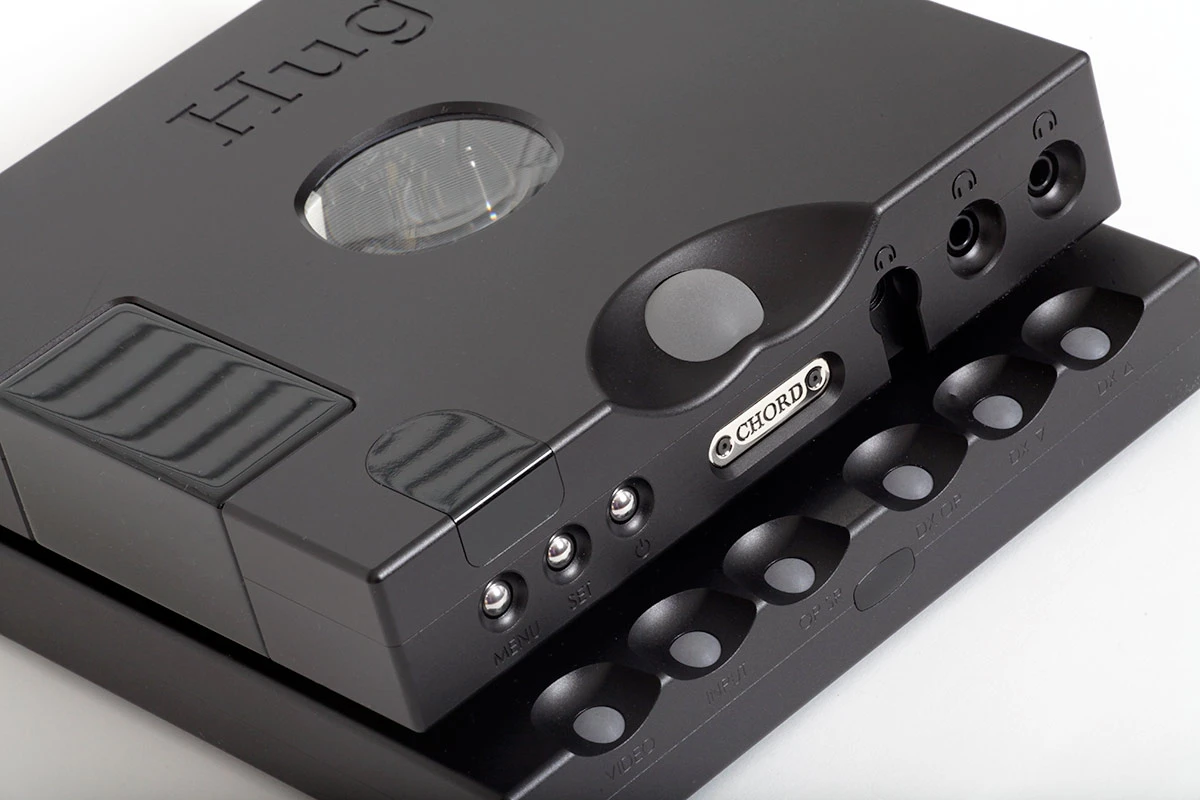
Evaluations
Stage
96%
Detailing
92%
Macrodynamics
92%
Microdynamics
93%
Bass extension
91%
Timbral authenticity
94%
Genre versatility
92%
Overall
92%
Specifications
This product is in the Hi-Fi and High End Electronics and Acoustics database
DACs — Chord Hugo TT2
Model name
Hugo TT2
Conversion type
FPGA
Engine
Xilinx Artix 7
DSD compatability
Yes
Parameters
PCM 32/768, DSD DoP 512 or DSD 512 (only in Windows environment)
Frequency response low +/- 3dB (Hz)
N/A
Frequency response high +/- 3dB (Hz)
N/A
Gain (dBu)
N/A
Output Level (balanced) (V)
N/A
Output Level (single-ended) (V)
N/A
Input Impedance (balanced) (Ω)
N/A
Input Impedance (single-ended) (Ω)
N/A
Output Impedance (balanced) (Ω)
N/A
Output Impedance (single-ended) (Ω)
N/A
Analog outputs
N/A
Signal to Noise Ratio (dB)
N/A
Total Harmonic Distortion + Noise (% at 22 kHz)
0.00008
Dimensions (mm)
52 x 235 x 238
Weight (kg)
2.53
Official link
Particular qualities
Xilinx Artix 7 Field Programmable Gate Array
PCM 32/768, DSD DoP 512 or DSD 512 support
External Li-Po battery power supply at 5A, 9.3V RMS using six super capacitors.
Channel separation - 138 dB
Dynamic range - 127 dB
More content
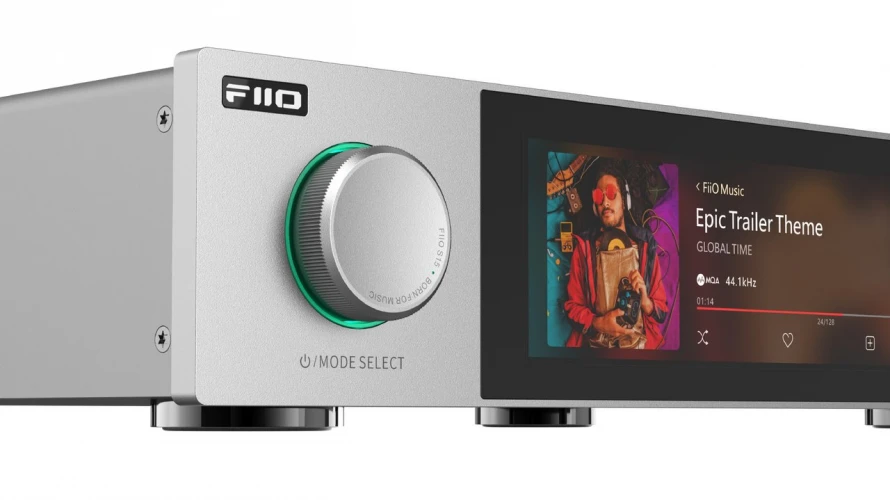
Top-8 Budget Audio Streamers with Excellent Sound
How to Choose a Network Player in 2025
When it comes to a modern Hi-Fi audio system based on a digital sound source, you can’t do without a network player or audio streamer, usually with a built-in digital-to-analog converter. These devices offer amazing flexibility of connection (both streaming clients of well-known services and wireless signal transmission options are “on board”), and their sound quality has advanced greatly in recent years. So much so that even relatively budget devices paired with an integrated Hi-Fi amplifier and acoustics can provide excellent sound quality. Our new rating or hit parade contains just such modern audio streamers.
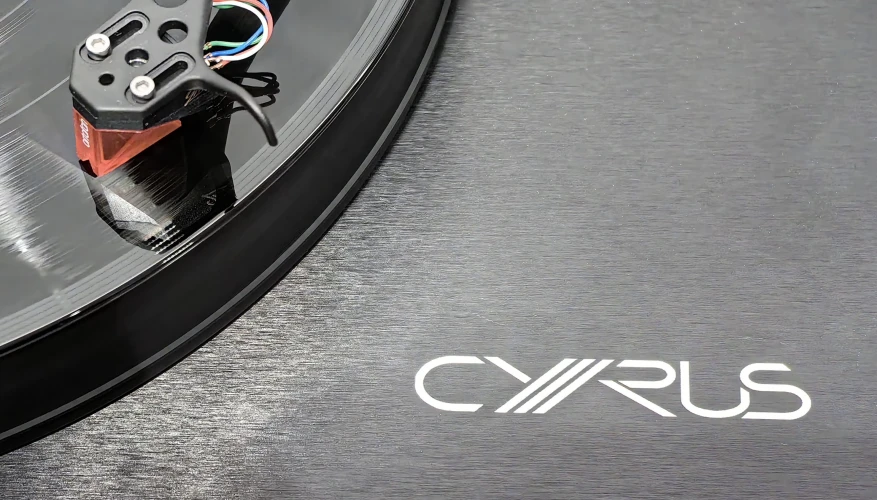
Cyrus TTP Turntable review – 24 Kilograms of Force in a Compact Case
An Impressive Vinyl Turntable from the UK
The first and only turntable in the model range of the famous British company Cyrus, the Cyrus TTP Turntable fits perfectly with the rest of the company's models range (from the Classic PHONO to the Cyrus Classic or XR preamplifiers or integrated amplifiers) and offers extraordinary playback quality in its price category. We tested the turntable and studied it in all details - let's understand both the design of the player and its musical capabilities.

How to Choose an Audiophile Subwoofer - 2025 Rating
Thunderbolts of Sound
While a standard stereo system typically uses a pair of full-range loudspeakers, triphonic solutions, focused on acoustics with limited bass extension, supplemented by an active subwoofer, are gaining popularity. In this expert analytical material, you will find seven subwoofers specially selected by the editors - suitable specifically for music installations. The rating starts with relatively inexpensive devices and ends with genuine High-End.

Choosing a High-End Stereo Power Amplifier - 2025 Rating
Muscles for Audiophiles
A component system is the alpha and omega of a High-End system, and a stereo power amplifier is its heart. It is the power amp that is responsible for revealing the talents of the acoustic systems, controls the speakers and forms the foundation of the system's sound signature. Our new selection contains eight of the latest exceptionally powerful extra-class amplifiers - from High-End devices to the stunning Ultra High-End echelon. So, how to choose an amplifier that can handle any speakers is a solved problem.

Top 10 Best TWS Headphones of 2025 – Audiophile Guide
Which True Wireless Headphones to Choose in Terms of Sound Quality
TWS headphones have become an integral part of our lives – but, as usual, we are interested in Hi-Fi and High-End models that can satisfy the needs of audiophiles. It is not always possible to sit in front of a home system – or take large-sized overhead headphones on the road. TWS models have made a quantum leap in terms of music reproduction quality – and the ten models presented below can satisfy even the most demanding music lovers.


